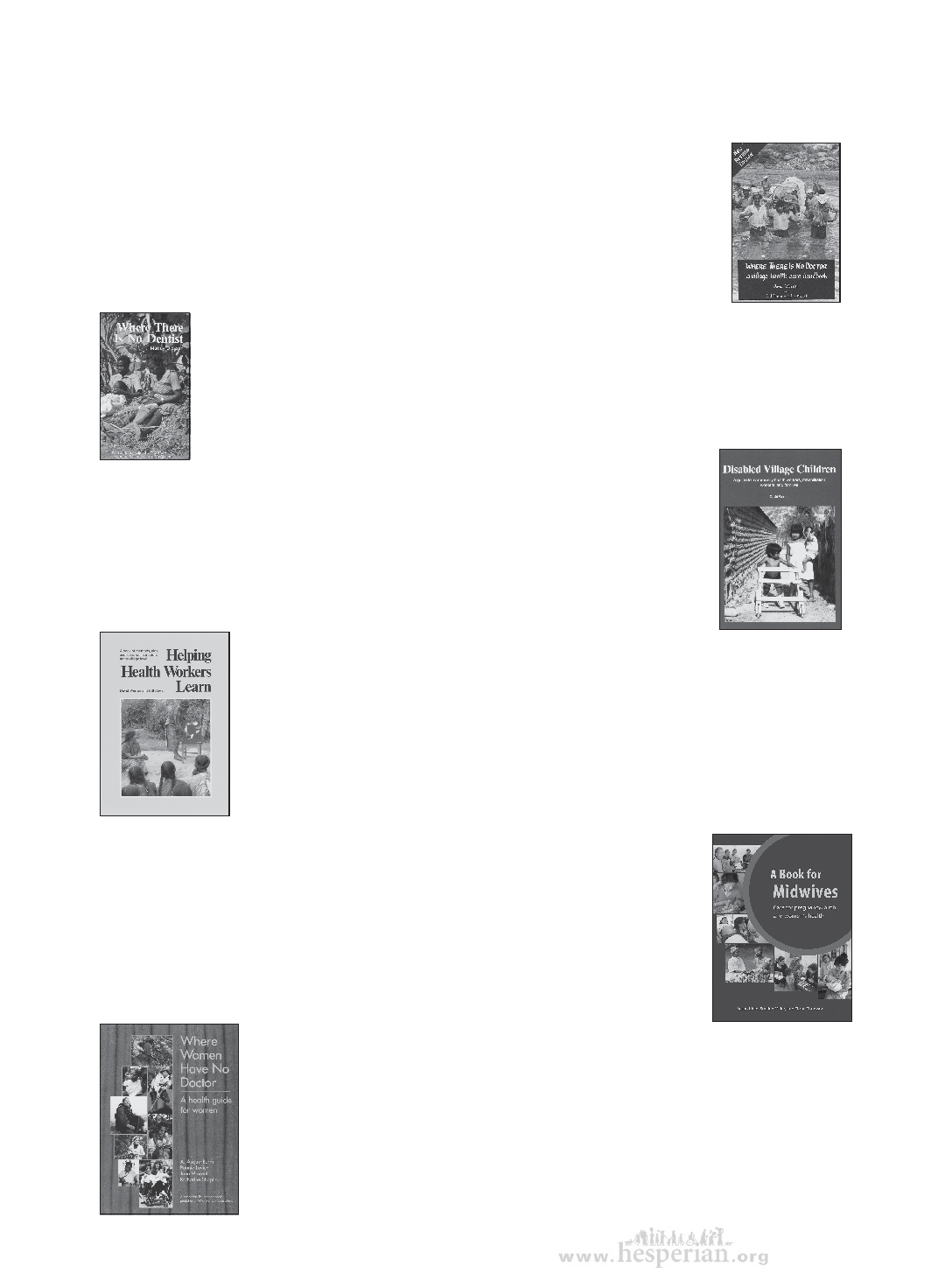
192 w h e r e t o g e t m o r e i n f o r m a t i o n
Other books from the Hesperian Foundation
Where There Is No Doctor, by David Werner with Carol Thuman and Jane
Maxwell, is perhaps the most widely used health care manual in the world.
The book provides vital, easily understood information on how to diagnose,
treat and prevent common diseases. Special importance is placed on ways
to prevent health problems, including cleanliness, a healthy diet and
vaccinations. The authors also emphasize the active role villagers must take in
their own health care. 512 pages.
Where There Is No Dentist, by Murray Dickson shows people how to care
for their own teeth and gums, and how to prevent tooth and gum problems.
Emphasis is placed on sharing this knowledge in the home, community and
school. The author also gives detailed and well-illustrated information on
using dental equipment, placing fillings, taking out teeth, and suggests ways
to teach dental hygiene and nutrition. 208 pages.
Disabled Village Children, by David Werner, contains a wealth of
information about most common disabilities of children, including polio,
cerebral palsy, juvenile arthritis, blindness and deafness. The author gives
suggestions for simplified rehabilitation at the village level and explains
how to make a variety of appropriate low-cost aids. Emphasis is placed on
how to help disabled children find a role and be accepted in the community.
672 pages.
Helping Health Workers Learn, by David Werner and Bill Bower, is an
indispensable resource for anyone involved in teaching about health. This
heavily illustrated book shows how to make health education fun and
effective. Includes activities for mothers and children; pointers for using
theater, flannel-boards, and other techniques; and many ideas for producing
low-cost teaching aids. Emphasizing a people-centered approach to health
care, it presents strategies for effective community involvement through
participatory education. 640 pages.
A Book for Midwives, by Susan Klein, is written for midwives, traditional
birth attendants, community health workers and anyone concerned about
the health of pregnant women and their babies. The book is an invaluable
tool for midwives facilitating education and training sessions as well as an
essential reference for practice. The author emphasizes helping pregnant
women stay healthy; giving good care and dealing with complications
during labor, childbirth and after birth; family planning; breastfeeding; and
homemade, low-cost equipment. 528 pages.
Where Women Have No Doctor, by A.August Burns, Ronnie Lovich, Jane
Maxwell and Katherine Shapiro, combines self-help medical information
with an understanding of the ways poverty, discrimination, and cultural
beliefs limit women’s health and access to care. Clearly written and with over
1000 drawings, this book is an essential resource for any woman who wants
to improve her health, and for health workers who want more information
about the problems that affect only women, or that affect women differently
from men. 584 pages.
helping children who are blind